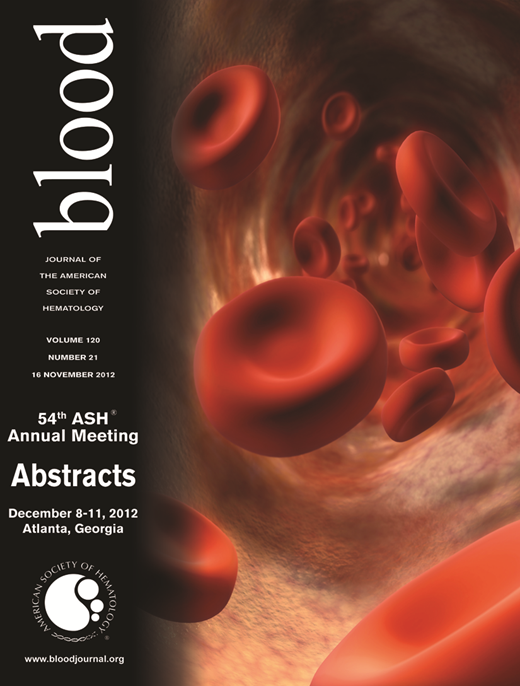Abstract
Abstract 1588
EBV-positive diffuse large B-cell lymphoma (EBV+ DLBCL) of the elderly is a provisional entity included in the 2008 WHO Classification of Lymphomas. Diagnostic criteria include age >50 years, DLBCL morphology and EBV expression in lymphomatous cells. However, these criteria are evolving as several patients are <50 years and a specific cut-off for the percentage of EBV expression has not been defined. The goal of this retrospective study is to evaluate clinical and pathological characteristics of EBV+ DLBCL from Peruvian patients.
Between January 2002 and January 2012, all patients meeting criteria for EBV+ DLBCL were included in the analysis. Patients with evidence of immunosuppression were excluded. All cases re positive for the presence of EBV-encoded RNA (EBER) by in situ hybridization, and CD20 and/or PAX-5 expression by immuno-histochemistry. Clinical data were reviewed retrospectively and patient's biopsies were analyzed for the expression of BCL6, CD10, CD30 and MUM-1/IRF4 using a tissue microarray (TMA) technique. The overall survival (OS) curves were calculated using the Kaplan-Meier method, and compared using the log-rank test.
A total of 43 EBV+ DLBCL patients are included in this study. The median age was 73 years (range 25–95 years). Four patients (9% ) were <50 years. The male:female ratio was 2.2:1. B symptoms occurred in 59%, ECOG >21 in 60%, advanced stage (III/IV) in 58%, elevated LDH levels in 44%, and lymphocyte count <1000/uL in 35%. The International Prognostic Index (IPI) score was 0–2 in 39% and 3–5 in 61% of the patients. Extranodal disease occurred in 20 patients (46%): stomach (n=3), tonsil (n=3), pleura (n=2), palate (n=2), cecum (n=2), bone marrow (n=2), ileum (n=1), bone (n=1), skin (n=1), lung (n=1), meninges (n=1), breast (n=1) and peritoneum (n=1). Three patients had central nervous system involvement (7%), one at presentation and two at relapse. Based on the Hans classification, 76% had non-germinal center profile. Ki67 expression was >80% in 53% of the patients. Eleven evaluated patients had a c-myc-negative status. Chemotherapy was received in 75% of the cases due to poor performance status. The overall response rate with conventional chemotherapy was 46%, with complete response in 39%, partial response in 7%, and no response in 54%. The median survival was 7.5 months. The Oyama score was: 0 factors (13%), 1 factor (47%), and 2 factors (40%) with median OS of 41, 11 and 1.5 months respectively (p=0.07). A lymphocyte count <1000/uL was a prognostic factor for OS (p=0.001).
Based on our study, which is the largest cohort in Latin-America, EBV+ DLBCL is an aggressive entity with frequent extranodal disease and poor response to conventional chemotherapy. The overall survival remains poor. Lymphopenia, as defined as lymphocyte count <1000/uL, appears as a prognostic factor for OS.
No relevant conflicts of interest to declare.
Author notes
Asterisk with author names denotes non-ASH members.

